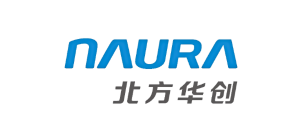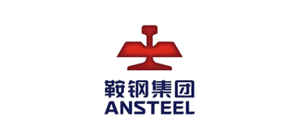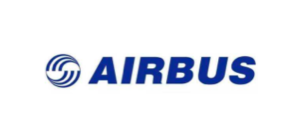Industry Encyclopedia>How to grab stable elements in rpa
How to grab stable elements in rpa
2024-04-25 10:05:04
In RPA, a stable grasp element is key to ensuring the accuracy and reliability of automated processes.
Here are some suggestions and methods to help you stably crawl elements in RPA: Understand the target interface structure: It is essential to have a deep understanding of the interface structure of the target web page or application before proceeding to the element crawl.
Analyze the elements that make up the interface, such as HTML, CSS, and JavaScript, and how they are laid out and interact.
Choose the right RPA tool: Different RPA tools have different ways of capturing elements and capabilities.
Choose tools that offer rich features and plugins, such as UIPath, Automation Anywhere, etc, which often provide powerful element recognition and grasping capabilities.
Use a variety of positioning strategies: XPath Positioning: XPath is a language for locating elements in XML and HTML documents.
Using XPath, you can pinpoint the target element.
Control identification: For interfaces based on standard controls, such as Windows applications, RPA tools can locate elements by identifying the control's type, name, and properties.
Image recognition: When interface elements are difficult to locate by other means, image recognition technology can be used to identify interface elements.
Text recognition: If there is fixed text content on the interface, elements can be positioned by recognizing these texts.
Optimize selectors and positioning strategies: Avoid using overly complex or fragile XPath expressions.
Try to use the element's unique identifier, such as the ID, name, or class attribute.
If possible, avoid using dynamically generated property values for positioning.
Handling Dynamic content: For dynamically loaded content, make sure to give enough time for the content to load before grabbing the element.
Use explicit and implicit wait mechanisms to deal with elements that are delayed by the network or loaded asynchronously.
Exception handling and retry mechanisms: Add exception handling logic to RPA scripts to retry or execute other recovery strategies if element fetching fails.
Set an appropriate timeout and retry times to avoid infinite loops or premature abandonment.
Test and validation: Adequately test RPA scripts in different environments and scenarios.
Verify the accuracy and stability of element grabbing to ensure that it can work reliably in practical applications.
Continuous monitoring and maintenance: Periodically check the performance of RPA scripts and whether there are updates or changes to the target interface.
Adjust and optimize as needed to maintain element fetching stability.
To sum up, stable crawling elements require a combination of strategies and techniques, including understanding the interface structure, choosing the right RPA tool, using multiple positioning strategies, optimizing selectors and positioning strategies, handling dynamic content, incorporating exception handling and retry mechanisms, adequate testing and verification, and ongoing monitoring and maintenance.
Here are some suggestions and methods to help you stably crawl elements in RPA: Understand the target interface structure: It is essential to have a deep understanding of the interface structure of the target web page or application before proceeding to the element crawl.
Analyze the elements that make up the interface, such as HTML, CSS, and JavaScript, and how they are laid out and interact.
Choose the right RPA tool: Different RPA tools have different ways of capturing elements and capabilities.
Choose tools that offer rich features and plugins, such as UIPath, Automation Anywhere, etc, which often provide powerful element recognition and grasping capabilities.
Use a variety of positioning strategies: XPath Positioning: XPath is a language for locating elements in XML and HTML documents.
Using XPath, you can pinpoint the target element.
Control identification: For interfaces based on standard controls, such as Windows applications, RPA tools can locate elements by identifying the control's type, name, and properties.
Image recognition: When interface elements are difficult to locate by other means, image recognition technology can be used to identify interface elements.
Text recognition: If there is fixed text content on the interface, elements can be positioned by recognizing these texts.
Optimize selectors and positioning strategies: Avoid using overly complex or fragile XPath expressions.
Try to use the element's unique identifier, such as the ID, name, or class attribute.
If possible, avoid using dynamically generated property values for positioning.
Handling Dynamic content: For dynamically loaded content, make sure to give enough time for the content to load before grabbing the element.
Use explicit and implicit wait mechanisms to deal with elements that are delayed by the network or loaded asynchronously.
Exception handling and retry mechanisms: Add exception handling logic to RPA scripts to retry or execute other recovery strategies if element fetching fails.
Set an appropriate timeout and retry times to avoid infinite loops or premature abandonment.
Test and validation: Adequately test RPA scripts in different environments and scenarios.
Verify the accuracy and stability of element grabbing to ensure that it can work reliably in practical applications.
Continuous monitoring and maintenance: Periodically check the performance of RPA scripts and whether there are updates or changes to the target interface.
Adjust and optimize as needed to maintain element fetching stability.
To sum up, stable crawling elements require a combination of strategies and techniques, including understanding the interface structure, choosing the right RPA tool, using multiple positioning strategies, optimizing selectors and positioning strategies, handling dynamic content, incorporating exception handling and retry mechanisms, adequate testing and verification, and ongoing monitoring and maintenance.
























